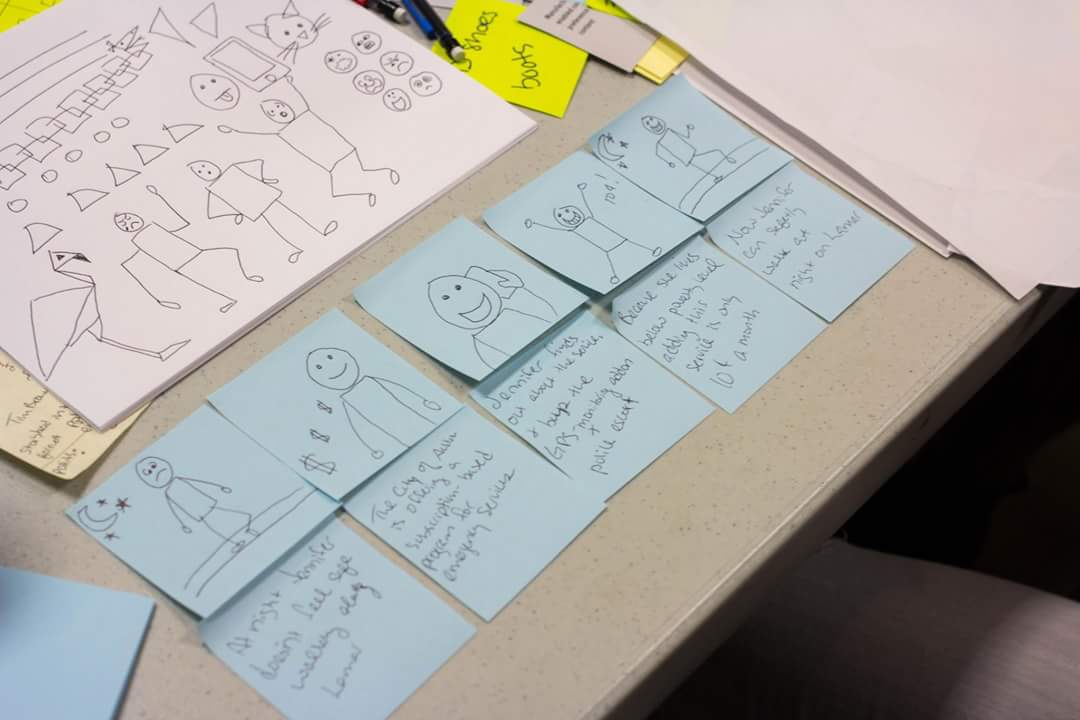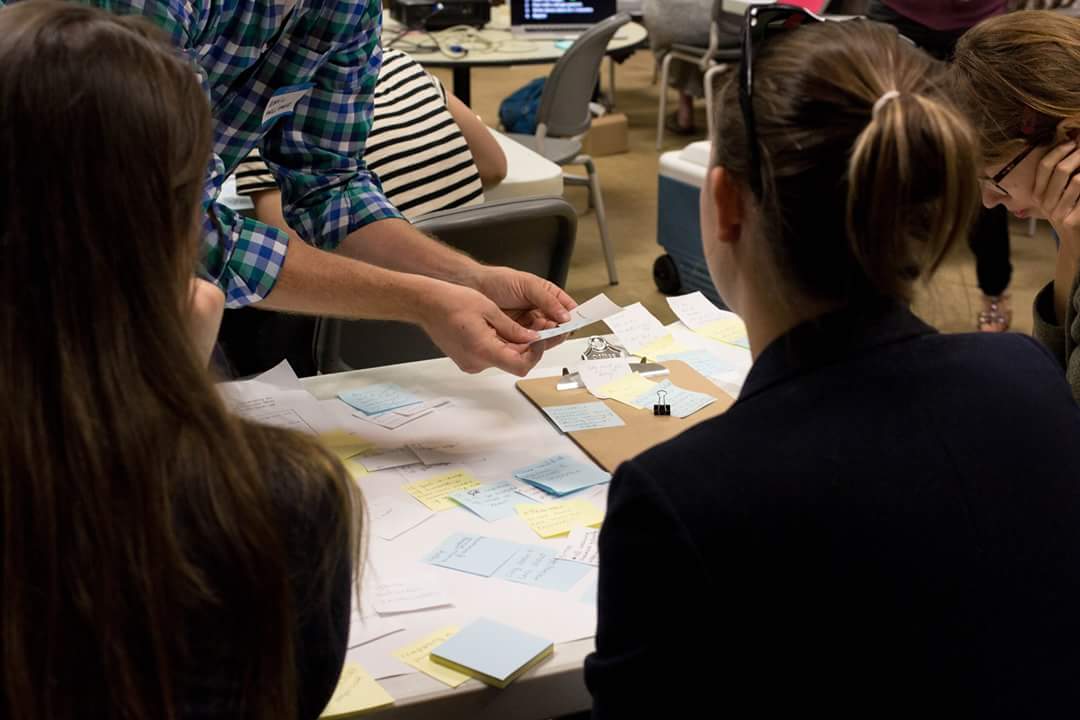
My day as a UXer at the Designing for Civic Solutions Workshop
As a UX Design student in my final semester at ACC, I was thrilled to have the opportunity to attend the Open Austin’s Designing for Civic Solutions Workshop. It was held at the Little Walnut Creek Branch, Austin Public Library located near the Rundberg and North Lamar intersection. Snacks, refreshments, and lunch were provided to keep us well-fueled for the day’s human-centered design activities.
The morning started with an introduction by Mateo Clarke and Victoria O’Dell of Open Austin. Next we learned about the Rundberg community, and issues the area faces from Daniela Nuñez, Co-Vice President of the Georgian Acres Neighborhood Association. The human-centered design portion of the workshop was kicked off by Eric Boggs, AC4D alumni, followed by Bhavini Patel, Laura Galos, James Lewis, and Samara Watkiss. Each took turns introducing the room to a different phase of the process we’d utilize for the duration of the workshop.
As we moved into the Research phase, participants broke up into small teams to choose what they would focus on for the day. I teamed with Lora Rowan and Kayla Kennett to focus on “what it feels like to be a bicyclist or pedestrian crossing the intersection at North Lamar and Rundberg”, one of the most dangerous intersections in the city.
We collaborated to come up with open-ended questions, and headed out into the field on foot to ask area residents our questions with the goals of gaining empathy and insights. We successfully interviewed a few Austin residents, although we ran into language barriers with a couple of other potential interviewees. We took turns serving as the facilitator, notetaker, and photographer. Soon the heat of the afternoon kicked in, and we headed back to the Library for a break.

Contextual observation - These ladies crossed N Lamar in the middle of the street and seemed very calm. They were standing in the street waiting to cross.
After the our lunch break concluded, we moved into the Synthesis phase of the workshop. We were led through a series of exercises where we examined what our interviewees shared with our team, and discovered themes and insights. This is the phase where the post-its and scissors were put into heavy use, as we collaborated.

Eric Boggs mentoring, me (left), Lora (middle), Kayla (right)
In the Ideation phase we were encouraged to generate many ideas without censorship in our teams. During this phase we engaged each team member, and openly encouraged the sharing of ideas and opinions. Then we used creative downselection, to identify ideas based on criteria appropriate to the project.
Finally, we moved into Storyboarding as a Prototyping tool. Each team member created their own storyboard during this phase. We brought our individual design vision to life using a concise and focused approach to introducing the people in our story, showing the problem, the solution, and the result. We also learned some pretty nifty shortcuts to expressing emotion with facial expressions, that help the viewer understand the emotions tied to the experience.

This was my storyboard.
In conclusion, I thoroughly enjoyed the workshop, and hope that some of the ideas from attendees might solve the issue of mobility in Austin. It was incredible getting out in the field to conduct research, and listen to Austinites share their stories. Learning and applying AC4D alumni’s human-centered design process was also quite rewarding in many ways.